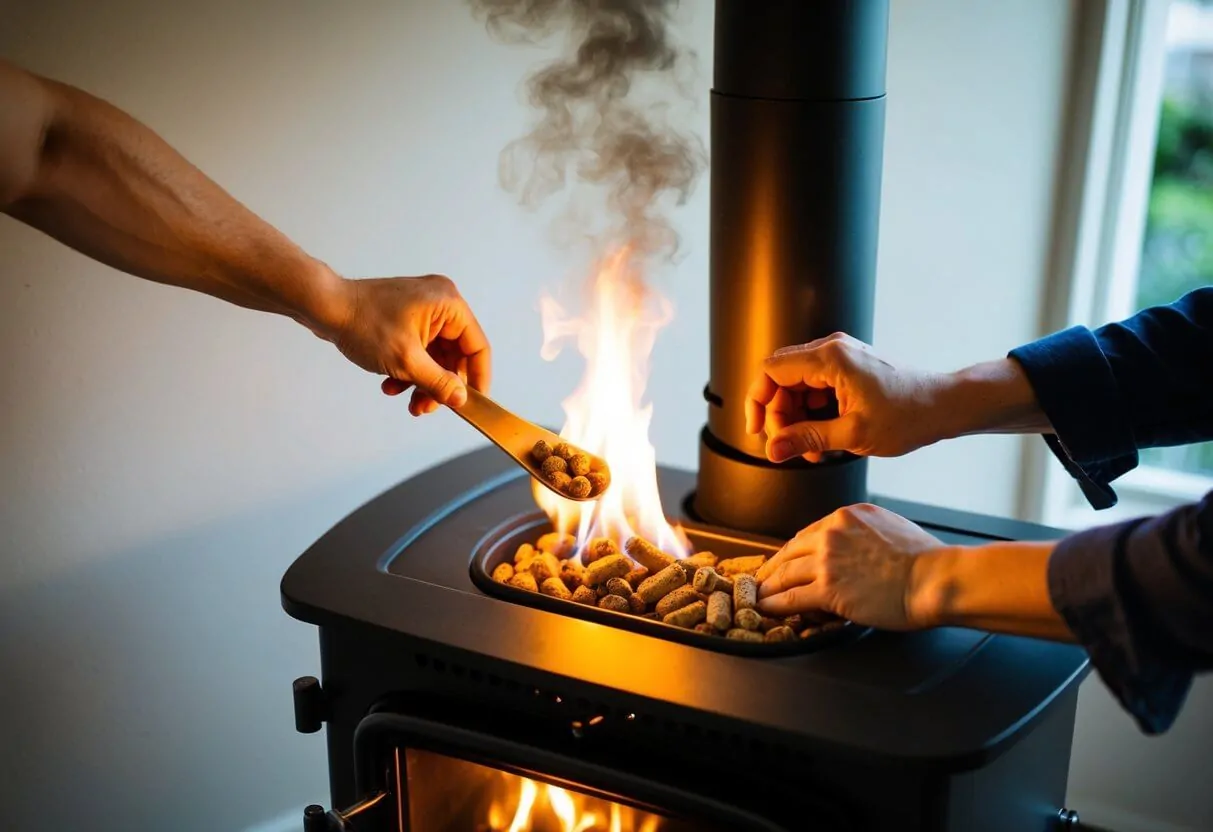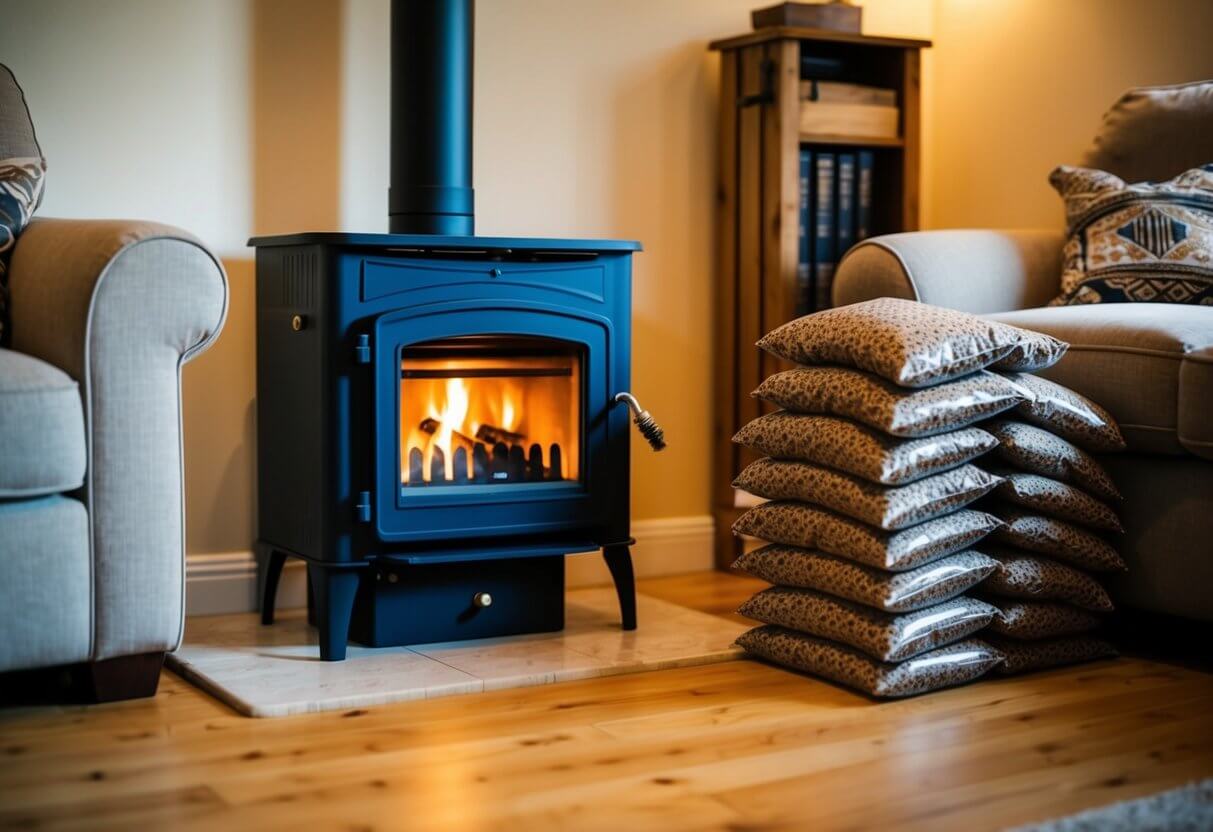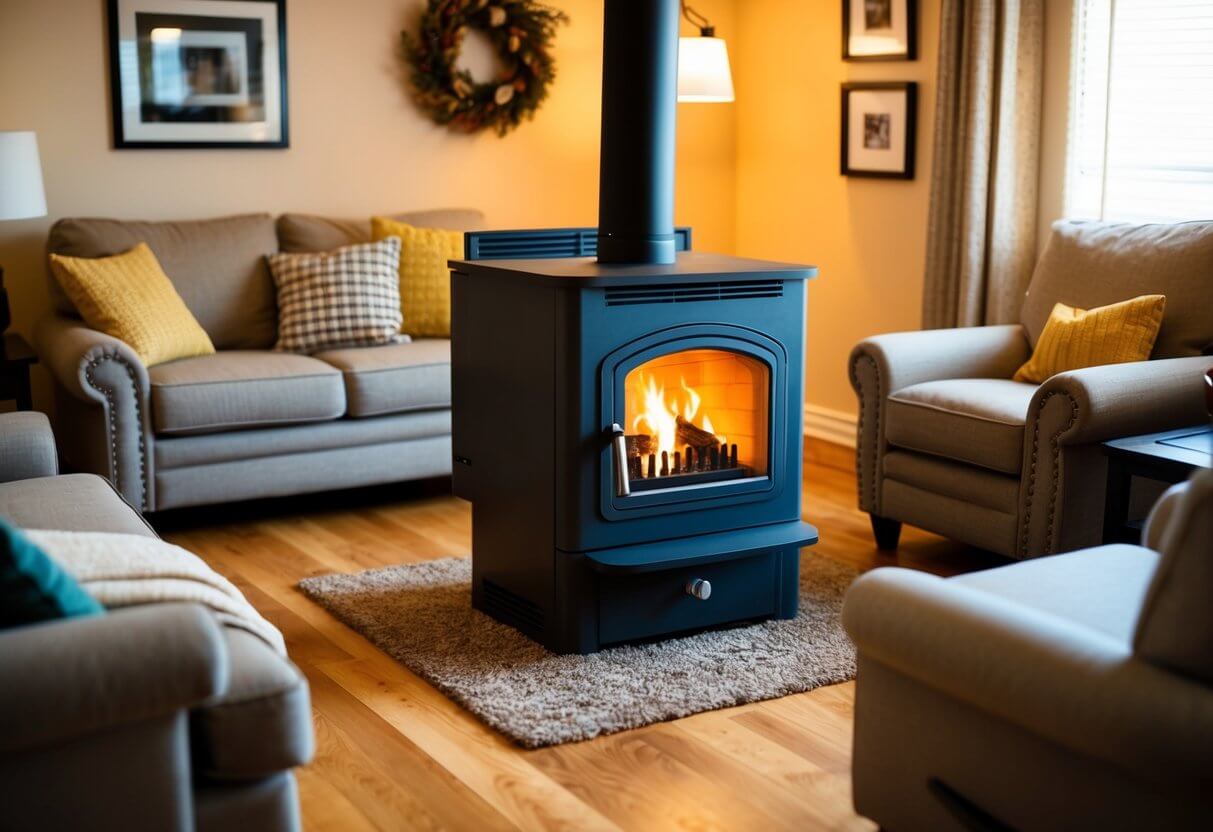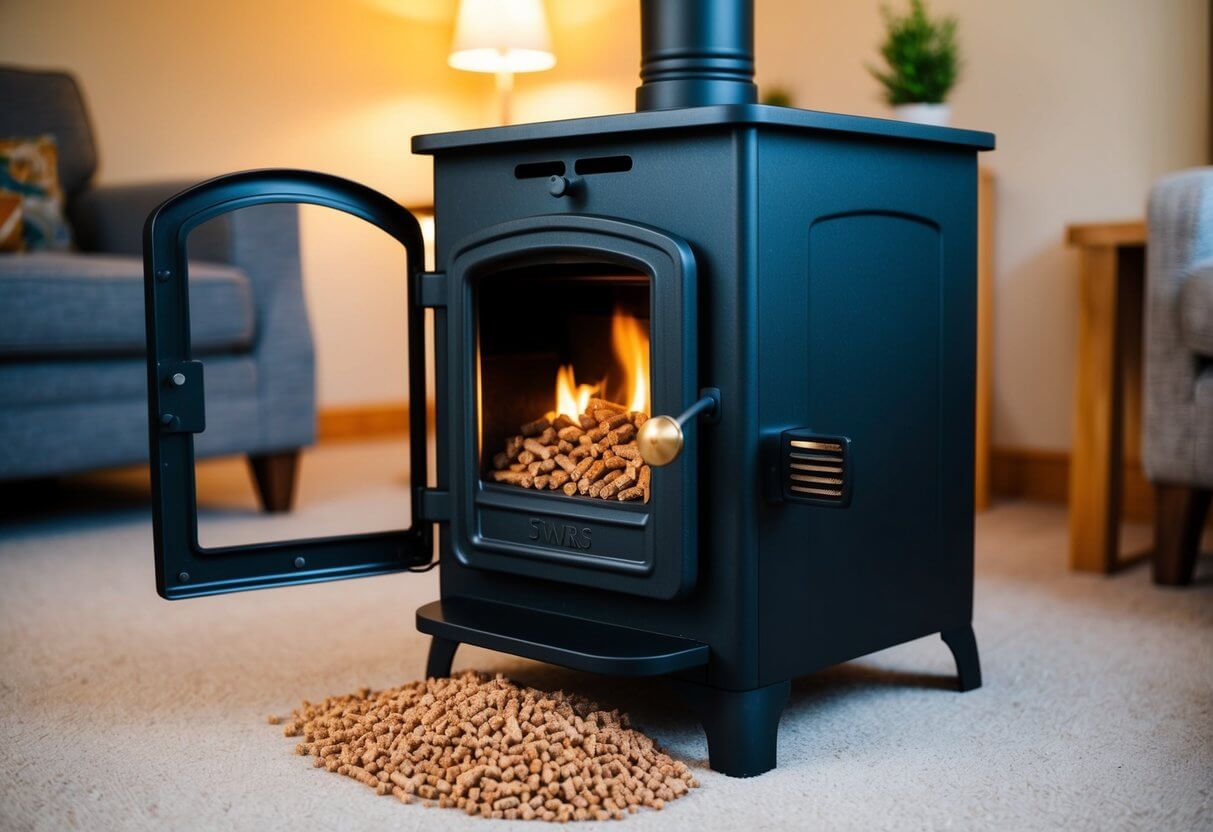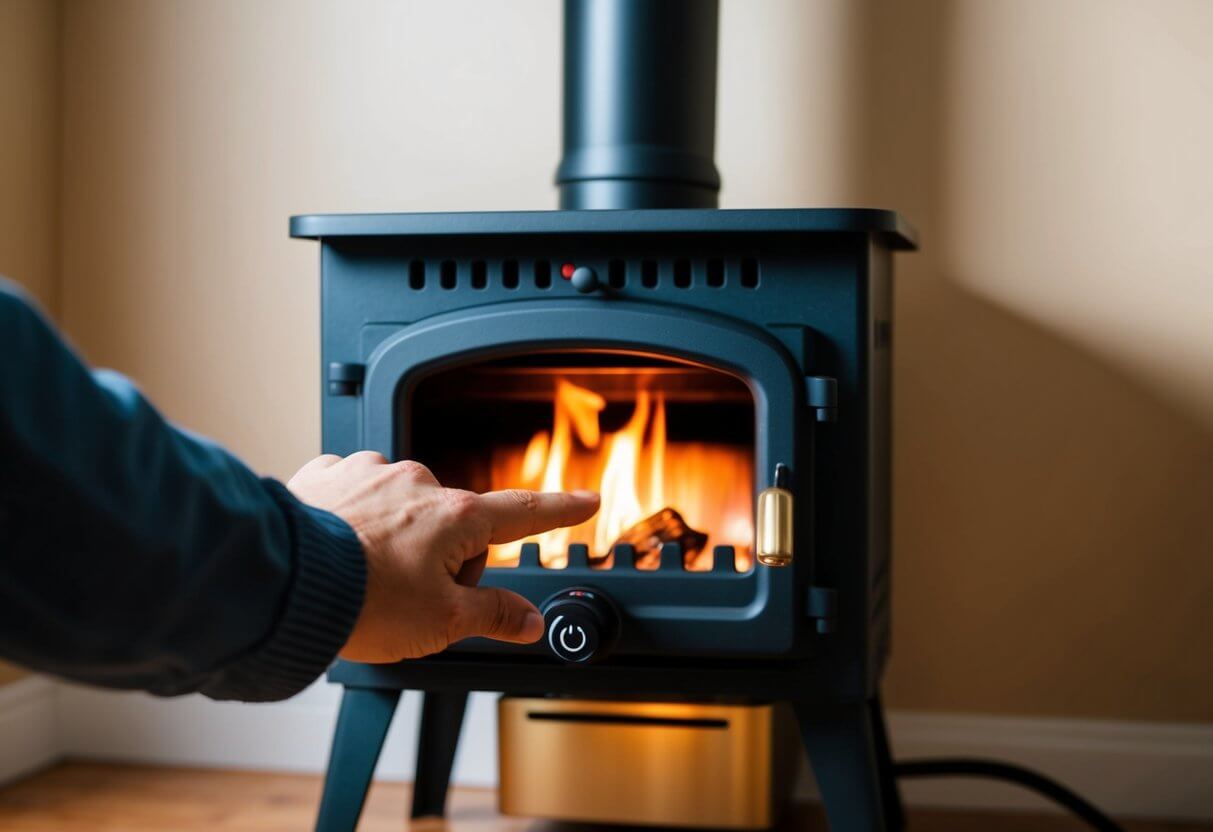A Complete Guide to Using Your Pellet Stove: Efficient Home Heating Made Simple
Pellet stoves offer an efficient and low-maintenance heating solution for homes. These innovative appliances provide a reliable alternative to traditional wood-burning fireplaces, combining convenience with effective warmth distribution. While pellet stoves present numerous advantages, it’s essential to understand their operation, fuel requirements, and maintenance needs before making a purchase decision.
Proper knowledge of pellet stove functionality and care is crucial for optimal performance and longevity. Familiarizing oneself with the manufacturer’s guidelines ensures correct usage and maintenance procedures. By exploring the various aspects of pellet stoves, homeowners can make informed choices about incorporating this heating option into their living spaces.
Key Takeaways
- Pellet stoves provide efficient home heating with reduced maintenance compared to traditional fireplaces
- Understanding pellet stove operation and care is essential for optimal performance
- Familiarization with manufacturer guidelines ensures proper usage and maintenance of the appliance
Benefits of Choosing a Pellet Stove
Pellet stoves offer an eco-friendly heating solution for homes. These appliances use renewable fuel sources, promoting sustainable practices and reducing waste. By burning recycled materials, pellet stoves help minimize carbon emissions and environmental impact. They provide efficient zone heating, allowing users to warm specific areas of their homes. Pellet stoves also offer a clean-burning alternative to traditional heating methods, producing lower particulate emissions.
Electric Power Requirements
Pellet stoves rely on electricity to operate their motorized components. A nearby electrical outlet is essential for installation and use. This dependency on electrical power presents a limitation during outages, unlike traditional gas or wood fireplaces. Some models offer battery backup systems as an optional feature, though at an increased cost. This allows for continued operation during power interruptions. When selecting a pellet stove, consider:
- Proximity to electrical outlets
- Frequency of power outages in your area
- Need for backup power options
- Additional cost of battery backup features
Evaluating these factors helps ensure the stove meets your heating needs and operates reliably in various conditions.
What Fuels These Efficient Heaters?
Pellet stoves require specialized fuel for optimal performance and safety. The primary fuel source is pellets, compact cylinders made from compressed organic materials. These pellets typically consist of:
- Wood chips
- Sawdust
- Bark
- Crop waste
- Other organic matter
The density of pellet fuel contributes to its clean and efficient burning properties. When burned, pellets produce minimal smoke, soot, ash, and creosote compared to traditional wood-burning stoves.
Pellet quality varies, with higher-grade options offering cleaner burns and reduced maintenance needs. While premium pellets may cost more, they often result in less waste and fewer cleaning requirements.
It’s crucial to use only manufacturer-recommended pellets to prevent damage to the stove and ensure safe operation. Using improper fuels, such as whole wood or other materials, can be harmful to both the appliance and your home.
Operating and Control
Pellet stoves feature advanced technology for effortless operation. The automatic ignition system eliminates the need for manual lighting. Simply press a button to start the stove. Before initiating, ensure the hopper contains sufficient pellets to sustain the fire.
The central control unit manages key functions, including:
- Temperature regulation
- Fuel feed rate
- Blower speed
Many models incorporate thermostatic control for precise temperature management. This automation enhances efficiency and comfort.
When finishing use, avoid immediate unplugging. The stove requires a cool-down period. Utilize the built-in timer for automated shutdown. This process ensures safe temperature reduction before handling or disconnecting power.
Adhering to manufacturer guidelines prevents operational issues and extends the stove’s lifespan. Proper start-up and shutdown procedures are crucial for optimal performance and safety.
Pellet Stove Heat Distribution
Pellet stoves provide efficient heating for various room sizes. Proper sizing is crucial for optimal performance. A stove that’s too large for a small space may cause operational issues if run at low settings. Professional consultation can help determine the ideal stove size for specific areas.
Heat output from pellet stoves depends on several factors:
- Room insulation quality
- Number and type of windows
- Temperature settings
These appliances typically produce substantial clean heat that users can adjust. The heat output efficiency is influenced by:
- BTU rating
- Convection system
- Distribution blower speed
For maximum energy efficiency, consider:
- Matching stove size to room dimensions
- Optimizing insulation
- Using programmable thermostats
Proper maintenance and clean filters contribute to consistent heat production and improved combustion efficiency.
Fuel Storage and Delivery Systems
Pellet stoves incorporate specialized chambers for storing and delivering fuel. These components, typically called hoppers, can be positioned at the top or bottom of the unit. Most standard models feature hoppers with capacities ranging from 35 to 130 pounds.
Top-mounted hoppers offer enhanced safety by reducing the risk of fire spreading to the fuel storage area. However, they may be more prone to clogging from ash accumulation. To mitigate this issue, using higher quality pellets is recommended.
In contrast, bottom-mounted hoppers are less susceptible to blockages and can accommodate lower grade pellets. This design, while more forgiving in terms of fuel quality, may result in slightly less efficient fuel delivery and combustion.
The hopper works in conjunction with other key components like the burn pot, combustion chamber, and auger to ensure proper fuel flow and combustion.
Pellet Stove Exhaust Systems
Pellet stove venting systems must comply with local building regulations. Proper sealing of all joints and openings in the flue is essential, using high-temperature cement or caulk. Annual cleaning of the ventilation pipes with a specialized brush is crucial to remove potential fire hazards. This maintenance ensures the safe and efficient operation of the stove while protecting the home from risks associated with blocked or dirty vents.
Keeping Your Pellet Stove in Top Shape
Regular upkeep is crucial for pellet stoves, especially when used as primary heat sources. Daily checks of the burn pot help prevent buildup. Weekly emptying of the ash drawer is recommended as it accumulates residue. The heat exchanger also requires periodic cleaning.
For optimal performance:
- Inspect burn pot daily
- Empty ash drawer weekly
- Clean heat exchanger regularly
- Follow manufacturer guidelines
While many tasks can be done at home, professional servicing offers benefits:
| DIY Maintenance | Professional Service |
|---|---|
| Cost-effective | Expertise |
| Frequent | Thorough inspection |
| Basic cleaning | Advanced repairs |
Proper care ensures efficient operation and longevity of your pellet stove. Regular cleaning and maintenance are key to enjoying consistent warmth and comfort throughout the heating season.
Operational Expenses
Pellet stove running costs fluctuate based on several factors. Location plays a significant role in determining expenses, as pellet prices and availability vary regionally. Frequent use naturally leads to higher fuel consumption and increased costs.
To optimize heating expenses, consider:
- Purchasing pellets in bulk during colder months
- Using a fuel savings calculator to estimate consumption
- Exploring potential tax credits for energy-efficient appliances
Room size, pellet quality, and electricity usage also impact overall costs. Higher-grade pellets may be more expensive initially but can provide better efficiency and heat output.
Factors affecting operational costs:
| Factor | Impact |
|---|---|
| Room size | Larger spaces require more fuel |
| Pellet grade | Higher quality = better efficiency |
| Electricity usage | Affects overall running costs |
| Frequency of use | More use = higher expenses |
Regular maintenance and proper operation can help ensure cost-effective performance. By understanding these factors, homeowners can make informed decisions to manage their pellet stove expenses efficiently.
Common Questions About Pellet Stoves
Maximizing Pellet Stove Efficiency
To get the most out of a pellet stove, maintain a clean burn pot and ash pan. Regularly vacuum the exhaust path and clean the heat exchanger tubes. Use high-quality pellets and adjust the air-to-fuel ratio for optimal combustion. Keep the hopper filled to ensure continuous operation.
Manual Ignition Methods
If the automatic igniter fails, pellet stoves can be lit manually. Place a handful of pellets in the burn pot and use a gel fire starter or small torch to ignite them. Once the pellets are burning steadily, turn on the auger to feed more pellets and start normal operation.
Connecting a Thermostat
Many pellet stoves can be connected to a thermostat for automated temperature control. Check the stove’s manual for thermostat compatibility. Install a low-voltage thermostat and connect it to the designated terminals on the stove’s control board. Program the thermostat to maintain desired temperatures.
Health Considerations
Pellet stoves produce less indoor air pollution than traditional wood stoves. They emit lower levels of particulate matter and carbon monoxide. However, proper ventilation is crucial. Regular maintenance and cleaning help minimize potential health risks associated with combustion appliances.
Continuous Operation Duration
Pellet stoves can operate continuously for extended periods, typically several days to weeks, as long as the hopper is kept filled with pellets. It’s advisable to perform brief shutdowns every few days for cleaning and inspection to ensure safe and efficient operation.
Pellet Consumption Rate
A 40-pound bag of pellets typically lasts 24-48 hours in a pellet stove, depending on the heat setting and stove efficiency. On low heat, it may last up to 3 days, while on high heat, it could be consumed in less than a day. Factors like home insulation and outdoor temperatures also affect pellet consumption rates.

